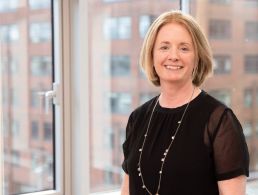Dr Claudia Antolini talks about her own pursuit of a science career and the importance of recognising scientists’ other interests.
What do you want to be when you grow up? It’s a question often put to very young children and can be met with any number of answers, from footballers and singers to pilots and teachers.
Sometimes children say ‘scientist’ with confidence, developing an early interest and pursuing that all the way through their education. However, it’s also important to recognise that not every fully-fledged scientist is required to have dreamt of donning a lab coat since they were young.
Dr Claudia Antolini is a science communicator with a bachelor’s in physics, a master’s in astrophysics, another in space science and technologies, and a PhD in astrophysics. “My father makes a joke that I have four degrees, all more or less in the same thing,” she said. “So, clearly I’m biased towards space.”
However, Antolini didn’t have an overt pull towards space since she was young, despite what people might think. “When I was a child, I do remember being very curious and very interested in a number of things, but I actually wanted to pursue a career in acting at first. So, I can’t remember myself as a very young girl envisioning myself in a lab coat or doing astronomy observations every night,” she said.
“I realised that I wanted to be a scientist when I was in my teenage years, when I was around 17 or 18. I was young, but you don’t have to know that you’ve wanted to be a scientist since you were six.
“That’s very important, it’s healthy to explore different things and it’s perfectly OK. We should encourage young people to explore their interests and to foster them, not just to pick one from very, very early on, because then you might find out it wasn’t necessarily the right thing for you.”
What did eventually pull Antolini into a science career was a strong urge to understand the world around her and focus on the idea of something bigger than her. “That’s how I decided that I wanted to be an astronomer because it was my way to make sense of the world I was living in.”
‘You don’t have to know that you’ve wanted to be a scientist since you were six’
Now, in a full-time career in science communication, Antolini also has a strong personal commitment to ensuring diversity of representation is achieved in the science field.
“With people from all different backgrounds and all walks of life, we can produce better science and we can fulfil the real aim of science, which is to improve everyone’s life conditions, and we really need that diverse input in order to achieve that.”
While she acknowledges positive change within the sector, Antolini said we still have a long way to go. “We see a lot of talk about women in science, which is great, but we must never forget about the fact that it’s not only about gender.
“There’s a number of other issues that overlap with gender. LGBTQ+ issues are still very much debated, disabled people have a lack of access to STEM subjects as well, the issue of race, ethnic diversity and religion are also still quite preponderant. So while it’s good that these things are talked about more, it’s not enough yet.”
Scientists are more than one thing
Besides being a scientist, Antolini also said she loves cooking, singing and acting, an interest that never truly left her. “I’m a person with a lot of different interests and I find it quite hard to put myself in a box because I feel like, yes, science is definitely very important to me but it’s not the only thing that defines me.”
She said when people think about scientists, they often consider them as people who are entirely dedicated to science and can often forget that they have other interests and passions.
‘I don’t think there can be good science that is absolutely separate from art’
“Even when we look at history and at important scientists from the past, they weren’t just scientists either. Leonardo [da Vinci] used to be a painter and an engineer. Einstein played the violin, Mae Jemison is a dancer and an astronaut. So there are plenty of examples in history and in modern times of people who like and can excel in more than one thing,” she said.
“At the end of the day, science and art are expressions of the same human instincts, which is curiosity and creativity. It’s looking at the world and wanting to put something out there. Science uses the world as inspiration to ask questions and the answers they give are based on factual experiments and the scientific method. Art uses the world to reflect and to elicit a reaction that must be expressed. Art uses different instruments, for sure, but it’s still for the rest of the world to see.
“So, I strongly believe the two should go hand in hand more because I don’t think there can be good science that is absolutely separate from art,” she said.
The role of space on Earth
When asked if she has dreams of actually going into space, Antolini laughed and said, “Who doesn’t dream of that?” But in reality, she added, it’s not the goal for her.
“In my view, it’s not necessarily making it to space that matters, it’s more about using space as a way of uniting people and conveying the message that there is something that’s bigger than all of us that should make us all better,” she said.
“I’m a very strong advocate for the role of space here on earth and how to really make the most of it. How to make sure that everyone can access space in a safe, ethical, meaningful way – not only countries that have historically been able to benefit from it. How can we make sure that everyone has fair access to space technologies? How can we make sure that we don’t keep making the same mistakes that we have before, how can we move away from that and ensure that there is fair access to all these resources?”
Antolini added that there are so many practical applications that space has in real life and the ways in which it can help life on Earth, such as earth observation, telecommunication, disaster monitoring and ocean currents.
“All of these things can help the Earth from space and we wouldn’t be doing them the way we do them now without space technologies and applications.”
Want stories like this and more direct to your inbox? Sign up for Tech Trends, Silicon Republic’s weekly digest of need-to-know tech news.




